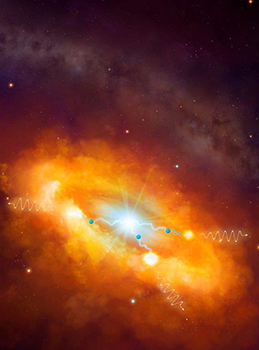Latest News Archive
Please select Category, Year, and then Month to display items
20 June 2023
|
Story Melissa Kilian
|
Photo Supplied
 Melissa Kilian is a Lecturer in the Department of Occupational Therapy.
Melissa Kilian is a Lecturer in the Department of Occupational Therapy.
The University of the Free State (UFS) is celebrating Youth Month by showcasing the positive influence of the institution on career development. As part of this initiative, we are sharing the stories of UFS alumni who are now working at the university.
Melissa Kilian, Lecturer in the Department of Occupational Therapy, shares her UFS journey:
Q: Year of graduation from the UFS:
A: 2011 and 2021.
Q: Qualification obtained from the UFS:
A: Baccalaureus and Master of Occupational Therapy.
Q: Date of joining the UFS as a staff member:
A: 1 June 2022 (employed for one year this month).
Q: Initial job title and current job title:
A: Lecturer in Occupational Therapy.
Q: How did the UFS prepare you for the professional world?
A: The UFS provided me with excellent clinical exposure to the diverse profession of occupational therapy. Additionally, the occupational therapy undergraduate course provided many opportunities for promoting self-awareness and self-development and entering the workforce as a graduate willing to explore the dimensions of the profession and what my unique contribution can be.
Q: What are your thoughts on transitioning from a UFS alumnus to a staff member?
A: Since being employed with the UFS, I have a deeper acknowledgement and appreciation for lecturers, as well as a multi-layered understanding of the importance of curriculum development and how this translates into students becoming competent graduates.
Q: Any additional comments about your experience?
A: It’s been quite an experience ...!
Two scientists part of team that discovers the source of the highest energy cosmic rays at the centre of the Milky Way
2016-03-22

Artist's impression of the giant molecular clouds surrounding the Galactic Centre, bombarded by very high energy protons accelerated in the vicinity of the central black hole and subsequently shining in gamma rays.
Artist's impression: © Dr Mark A. Garlick/ H.E.S.S. Collaboration Spotlight photo:
Dr Brian van Soelen and Prof Pieter Meintjes of the UFS Department of Physics.
Photo: Charl Devenish
|
H.E.S.S. (High Energy Stereoscopic System) scientists publically revealed their latest galactic discovery in the international science journal, Nature, on 16 March 2016. These scientists were able to pinpoint the most powerful source of cosmic radiation – which, up to now, remained a mystery.
Part of this team of scientists are Prof Pieter Meintjes and Dr Brian van Soelen, both in the University of the Free State (UFS) Department of Physics. Dr Van Soelen explains that they have discovered a proton PeVatron – a source that can accelerate protons up to energies of ~1 PeV (10^15 eV) – at the centre of the Milky Way. The supermassive black hole called Sagittarius A has been identified as the most plausible source of this unprecedented acceleration of protons.
The protons are accelerated to Very High Energy (VHE) gamma rays. The energy of these protons are 100 times larger than those achieved by the Large Hadron Collider at CERN (the European Organization for Nuclear Research).
According to Dr Van Soelen, the fact that this research has been published in Nature demonstrates the importance and pioneering nature of the research conducted by H.E.S.S. The H.E.S.S. observatory – operational in Namibia – is a collaboration between 42 scientific institutions in 12 countries.
In 2006, H.E.S.S. was awarded the Descartes Prize of the European Commission – the highest recognition for collaborative research – and in 2010 the prestigious Rossi Prize of the American Astronomical Society. The extent of the observatory’s significance places it among the ranks of the Hubble Space Telescope and the telescopes of the European Southern Observatory in Chile.
“The next generation VHE gamma-ray telescope,” Dr Van Soelen says, “will be the Cherenkov Telescope Array (CTA), which is currently in the design and development stage.” Both Dr Van Soelen and Prof Meintjes are part of this project as well.
H.E.S.S. has issued a complete statement about the paper published in Nature.